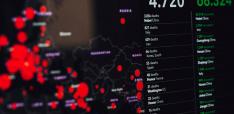The European Union in the Face of Conspiracy Theories as Hybrid Threats

Carlos González-Tormo looks at the functioning of conspiracy theories in undermining democracy and briefly surveys EU regulations to deal with this. The text is part of a forthcoming e-book by the Global Governance Research Group of the UNA Europa network, entitled ‘The European Union in an Illiberal World’.
Hybrid threats are an increasingly significant security concern: they undermine the principle of good faith in Article 2 of the United Nations Charter concerning states’ “equal sovereignty” and erode democracies from within. They often operate outside the bounds of legality in "grey zones", demanding proactive and flexible responses as they are difficult to detect (Sanz Caballero 2023). Nevertheless, both international and national systems can counteract the risks posed by hybrid threats through civil and criminal means. Thus, the challenge lies in defining such threats and detecting how to impede their corrosive effects. There is, however, a lack of consensus in defining hybrid threats, except for agreeing that they are attacks that deviate from traditional methods, aiming to destabilise legitimate social organisations, such as the EU and its constituent democracies, to gain political, social, or economic influence through multiple tactics of varying intensity, which consistently seek destabilisation (Ducaru 2016; Hoffman 2014; Lanoszka 2016; Ruiz-Ruano García and López Puga 2019; Lonardo 2021).
Two crucial aspects characterise hybrid threats: the difficulty in attributing authorship and the variety of forms they manifest, ranging from cyberattacks to the funding and implementation of disinformation campaigns (Bachman 2015; Sarri 2020). In today’s delicate times of the struggle between post-truth and democracy (Arias Maldonado, 2024), it is essential to distinguish between disinformation, misinformation, and malinformation (Wardle and Derakhsham 2017; García Ruiz 2023). At this juncture, conspiracy theories are closely related to cognitive biases and disinformation, reinforcing the narrative of systematic “fake news” campaigns (Romero Reche 2024), and creating a favourable environment for populist and illiberal views. Moreover, conspiracy theories are closely linked to malinformation due to their connection with hate speech (Cohn 2010). Originating as a concept of study by Karl Popper (1966), conspiracy theories can be defined as "theories that attempt to explain some social phenomenon or significant political event by attributing it to the clandestine action of one or several groups of presumed conspirators who are considered extraordinarily powerful and influential (Romero Reche 2024: 209)".
Consequently, it must be understood that conspiracy theories have evolved beyond blaming what Tesoro (2024) terms "the usual villains". They now act simultaneously to increase the complexity of everyday understaning, erode institutional trust in daily life, especially during difficult moments, such as pandemics or warlike events. Given these circumstances, the challenge for the European Union is multifaceted and demands efforts ranging from legislation to information literacy (Jones-Jang et al. 2019). Thus, this article aims to define and explain conspiracy theories as part of the spectrum of hybrid threats and what risks and threats they pose to European democracy and its values, especially in a context where social media allows for multiple versions of reality to be presented, for echo chambers to exist, and for pseudo-informational environments to be increasingly robust due to algorithms (Levy and Razin 2019; Bueno de Mata 2021; Lipmann 2023).
What are hybrid threats?
Achieving a precise definition of what constitutes hybrid threats, and what does not, remains a complex task (Sanz Caballero 2023). NATO, in its 2010 Strategic Concept, defined hybrid threats as “those posed by adversaries, with the ability to simultaneously employ conventional and non-conventional means adaptively in pursuit of their objectives”. In contrast, the definitions advanced by the European Union and the European Centre of Excellence for Countering Hybrid Threats and the European Commission characterise them as multidimensional threats that combine coercive and subversive measures, employing both conventional and unconventional tools and tactics.
These threats are deliberately designed to be difficult to detect or to attribute, targeting critical vulnerabilities with the aim of generating confusion and impeding rapid and effective decision-making. Consequently, if hybrid threats are difficult to define, they are equally challenging to identify. Hybrid threats encompass a broad spectrum of influence, as they may target infrastructure, public administrations, sectors related to the economy, defence, justice, or even intelligence services (EEAS 2018; Com and Hybrid CoE 2021, 26–36).
Thus, elusive hybrid threats represent a formidable challenge when attempting to regulate them without falling into what Sanz Caballero (2023) warns is “lawfare”. This, however, raises a problem as the traditional tools of the rule of law are insufficient to counteract this type of threat, given that some hostile states make use of legal arguments to support hybrid tactics (Janičatová and Mlejnková 2021).
Indeed, hybrid threats have created significant legal challenges concerning the laws of war, the right to self-defence, the legitimacy of pre-emptive measures, and the use of countermeasures in response to these opaque and complex offensive tactics. A further risk is that hybrid threats may alter existing customary international law in these areas by misleadingly reinterpreting legal norms (Moeckli et al 2022; Cardona, Sanz-Caballero, and Arrufat, 2022). The issue of attribution, and consequently accountability, is particularly problematic, as hybrid adversaries typically deny any involvement, making it difficult to assign responsibility. Although effective counteraction against hybrid threats requires close cooperation between NATO and the EU, the primary duty to respond rests with the targeted state (Gaiser 2019; Bazarkina 2022). In grey zone conflicts, both state and non-state actors frequently test and blur legal and informational boundaries (Weissmann 2019; Sari 2020; Nilsson et al. 2021). As Sanz Caballero (2023) notes, hybrid threats intentionally create legal ambiguity and obscure the distinction between what is considered normal or acceptable in international relations.
At the same time, it is not possible to police other people’s beliefs. Moreover, the destabilisation of democracy is reinforced through the progressive erosion caused by the dissemination of fake news and disinformation in general. However, the regulation of such phenomena is also limited and frequently comes into direct conflict with the safeguarding of freedoms of information, expression, and, indeed, thought. As Gallardo Paúls (2025, 87) remarks, it is essential to distinguish the inalienable right to freedom of expression from other communicative actions that may incite hatred and discrimination and may even constitute criminal offences.
What are conspiracy theories?
With the advent of social media, falsehoods have acquired an unprecedented real-world impact, as the speed, wide dissemination, and widespread impunity transform disinformation into a significant societal risk, particularly in terms of political and social polarisation (Gallardo Paúls 2025, 13). In response, the European Parliament published a report entitled Foreign Interference: How the Parliament Fights the Threat to EU Democracy, on 4 April 2024.
According to the classification proposed by Wardle and Derakhshan (2017), it is essential to distinguish between three related but distinct categories of problematic information. Misinformation refers to false or inaccurate content shared without intent to deceive: individuals disseminating it believe it to be true, even though it is not. Disinformation, by contrast, is the deliberate creation and distribution of verifiably false material, shared with the explicit purpose of misleading or manipulating an audience. This can encompass fabricated news, conspiracy theories, manipulated images, or deepfakes. Finally, malinformation pertains to genuine information that is disclosed or used with the intention of causing harm, such as through hate speech, online harassment, or the strategic leaking of private data.
Within the cognitive levels of disinformation systematised by Gallardo Paúls (2025, 130–132), conspiracy theories exhibit marked transversality, spanning from the micro level (where themes such as chemtrails, flat earth beliefs, or the notion that birds are government drones) are confined to specific topics, to the macro level, which is more systemic and aims to alter society’s civic and moral standards (exemplified by the great replacement theory or electoral fraud narratives). These theories are compact discursive constructions conveying macro-disinformation messages, with populist rhetorical structures common to both cognitive levels (Butter 2023; Gallardo Paúls 2025).
In any case, regardless of cognitive stance, conspiracy theories are linked to a specific list of recurring motives, as Romero Reche (2023, 81–114) has identified: antisemitism, secret societies, infiltration, political assassinations and covert killings, false flag attacks, historical revisionism, plagues and demographic control, government, and the new world order. Since the Covid pandemic, a scenario has intensified where distrust extends beyond conspiracist supporters to a general scepticism towards any official institutional information. Moreover, many individuals believe in conspiracy theories but do not acknowledge them as such, due to the stigma of the label and the conspiratorial assumption that such theories apply to others, not themselves (Bristielle 2022; Romero Reche 2023, 117). Butter’s definition of conspiracy theories makes this even clearer:
Conspiracy theories assert the existence of a covertly operating group of people –the conspirators— who seek, from base motives and by underhand means, to achieve a certain end. (…) A conspiracy, whether real or imagined, is therefore never the work of one individual, but always of a group (…). Conspiracy theories usually imagine far more comprehensive and ambitious –and hence impracticable—plots that actual conspiracies, which are very limited in terms of their scope and objectives. Above all, conspiracy theories assume a false view of people and history in claiming that history can be planned and controlled over any length of time. (Butter 2023)
This also leads to strong synergies between conspiracy theories and populist, illiberal tactics: Kendzior (2022) identifies a culture of conspiracism exploited by Trump and his allies, who have used outlandish conspiracy theories to divert attention from genuine scandals. This distraction tactic features rhetoric that discredits reality and official sources, aligning closely with Barkun’s (2015; 2017) characterisation of conspiracism, which centres on secret plans and occultism: there is a group of conspirators, nothing happens by accident, nor is anything as it seems, so everything is connected. This mindset not only fosters the belief in possessing a truth denied to the majority but also induces a relative state of paranoia, which manifests as distrust towards information provided by official sources, encompassing everything from democratic election results to the existence of a global virus and the necessity of vaccination. Therefore, Internet and social media have played a decisive role in this process: it allows interconnecting individuals and enabling the exchange of ideas among groups that were previously not only marginalised but also unable to reach large audiences.
Perverse effects and countering conspiracies
As Bazarkina (2022) states, although the European Union possesses a wide array of methods and channels to counter hybrid threats, the fundamental issue remains that neither EU institutions nor the research community have established a comprehensive definition of operations to address such threats. This conceptual ambiguity, however, enables justification of virtually any countermeasure. It thereby facilitates a systemic approach that allows the EU to assess both the convergence of threats to critical infrastructure and the infosphere, as well as the range of possible counteractions.
This flexibility, therefore, seems ideal for tackling such threats, especially in the case of geopolitical disinformation, whose purpose is to confuse populations by rendering truth indistinguishable from falsehood, to undermine the overall veracity of received information, and to introduce a social and cognitive dimension that directly impacts ethical and social standards, thereby affecting social cohesion (Gallardo Paúls 2025, 128). This phenomenon is particularly evident in what Chesney and Citron (2019) term the “liar’s dividend,” an aspect of disinformation that exploits public disenchantment and perpetuates constant suspicion, such that the instability of truth gradually erodes the credibility of official sources, including those of scientific or political institutional origin.
Thus, fighting against this type of hybrid threat partly involves responding legally and institutionally in the following manner: it is not a question of posing a false dichotomy regarding freedom of expression, but rather of understanding that combating disinformation entails not only protecting the right to truthful information but also genuinely safeguarding freedom of expression, especially in online spheres. In particular, the Internet and algorithms have facilitated the scenario identified by Rosanvallon (2007, 248-252), where organised citizen distrust undermines the assumption of classical trust derived from the ballot box. The progressive prominence of transparency has also contributed to this, occupying spaces once neglected in the exercise of responsibility.
In this regard, the European Union has developed regulations to address, or at least contain, this growing problem. Key instruments by the EU include: the 2018 EU Code of Practice on Disinformation, updated in 2022; the Regulation (EU) 2022/2065 of the European Parliament and Council of 19 October 2022 amending the Digital Services Act (Directive 2000/31/EC); and the EU Digital Services Act itself. Additionally, national laws enacted by Member States also play a role. Thus, tackling hybrid threats necessitates understanding their digital dimension, the complexity of criminal prosecution, and the importance of media literacy as the first line of defence. Equally, the issue demands consideration of major corporations, concerns about anonymity concerns –since while instigators can be identified, distinguishing between bots and trolls among numerous “haters” is challenging— and the capacity and effectiveness of independent state agencies with sanctioning powers, along with reinforcing citizens’ information literacy.
Carlos González-Tormo is Teaching Assistant in Political Science at CEU Cardenal Herrera University (Valencia). His research interests concern populism, parliamentarism, democratic backsliding and hybrid threats, with stays conducted at Centro de Estudios Políticos y Constitucionales and the Sapienza Università di Roma. His latest publications include González-Tormo, C. (2025). Parliamentary Commissions of Inquiry and Separation of Powers, Minorities’ Role and Presumption of Innocence: The Spanish Case. International Journal of Parliamentary Studies, 5(1), 67-92. https://doi.org/10.1163/26668912-bja10097; and Pérez-Gabaldón, M., Hernández-García, N., & González-Tormo, C. (2025). The backsliding of democracy in the EU: an analysis on the perception of corruption in the Member States pre- and post-pandemic. Political Research Exchange, 7(1). https://doi.org/10.1080/2474736X.2025.2497764
Acknowledgements and Funding
This contribution is within the research projects PID 2021-126765NB-I00 of MICINN and AICO/2021/099 of GVA. Part of this research was carried out during a research visit to the Sapienza Università di Roma in May and June 2025. The author would like to express his sincere gratitude to Dr Nicholas Sowels for his attention and willingness throughout the entire process.
Photo by Matheus Bertelli
References
Arias Maldonado, Manuel. 2024. Posverdad y democracia. Barcelona: Página Indómita.
Bachmann, Sascha. 2015. “Hybrid wars: The 21st-century’s new threats to global peace and security”. Scientia Militaria: South African Journal of Military Studies, 43(1), 77-98.
Barkun, Michael. 2015. “Conspiracy theories as stigmatized knowledge”. Diogenes, vol.62, no 3-4, 114-120.
Barkun, Michael. 2017. “President Trump and the “fringe”. Terrorismo and Political Violence, 29(3), 437-443.
Bazarkina, Yu D. 2022. “Countermeasures for hybrid threats: the experience of the European Union and its Member States”. Herald of the Russian Academy of Sciences, 92(Suppl 4), S315-S320. https://doi.org/10.1134/S1019331622100033.
Bristielle, A. 2022. Voyage en terres complotistes. París: Fayard.
Bueno de Mata, Federico. 2023. “Particularidades probatorias del discurso de odio en Internet: identificación de indicadores de polarización radical mediante sistemas algorítmicos”. Revista de Internet, Derecho y Política, (39). https://doi.org/10.7238/idp.v0i39.416359.
Butter, Michael. 2020. The nature of conspiracy theories. New York: John Wiley & Sons.
Butter, Michael. 2023. “Conspiracy theories as populist counter-narratives”. Political Science, Volume 130, 21-46.
Cardona Jorge, Susana Sanz-Caballero, Antonio Arrufat. 2022. La protección internacional de la persona. València: Tirant, 2022.
Chesney, Robert and Danielle Citron. 2019. “Deepfakes and the new disinformation war: The coming age of post-truth geopolitics”. Foreign Affairs, 98, 147.
Cohn, Norman. 2010. El mito de la conspiración judía mundial. Los protocolos de los Sabios de Sión. Madrid: Alianza.
Ducaru, Sorin Dumitru. 2016. “The cyber dimension of modern hybrid warfare and its relevance for NATO”. Europolity-Continuity and Change in European Governance, 10(1), 7-23.
European Commission. 2022. Code of Practice on Disinformation (2018, updated 2022), https://digital-strategy.ec.europa.eu/en/policies/code-practice-disinformation.
European Commission & European Centre of Excellence for Countering Hybrid Threats. 2021. The landscape of hybrid threats: a conceptual model. 2020 Report, OPEU, Luxembourg, 5 Feb 2021.
European Parliament. 2022. Regulation (EU) 2022/2065 of the European Parliament and of the Council of 19 October 2022 amending the Digital Services Act (Directive 2000/31/EC). https://eur-lex.europa.eu.
European Parliament. 2024. Foreign Interference: How Parliament is Fighting the Threat to EU Democracy. https://www.europarl.europa.eu/topics/en/article/20240404STO20215/foreign-interference-how-parliament-is-fighting-the-threat-to-eu-democracy.
European Union. 2022. Digital Services Act (DSA). https://digital-strategy.ec.europa.eu/en/policies/digital-services-act.
Gaiser, Laris. 2019. NATO-EU Collaboration on hybrid threats. Cooperation out of necessity with potential consequence on international legal framework. In: National security and the future, Vol. 20 No. 1-2. https://nsf-journal.hr/online-issues/focus/id/1263.
Gallardo Paúls, Beatriz. 2025. La Desinformación. València: Tirant Humanidades.
García Ruiz, Leopoldo. 2023. “Disinformation, Misinformation and Limits on Freedom of Expression During the Covid-19 Pandemic: A Critical Inquiry”. The Age of Human Rights Journal, 21, e8149. https://doi.org/10.17561/tahrj.v21.8149.
Hoffman, Frank G. 2014. “Hybrid warfare and challenges”. Strategic Studies, 329-337. London: Routledge.
Janičatová Silvie and Petra Mlejnková. 2021. “The ambiguity of hybrid warfare: a qualitative content analysis of the United Kingdom’s political–military discourse on Russia’s hostile activities”. Contemporary Security Policy, 2021, vol. 42, no. 3, pp. 312–344. http://dx.doi.org/10.1080/13523260.2021.1885921.
Jones-Jang, S. Mo, Tara Mortensen, and Jingjing Liu. 2021. “Does Media Literacy Help Identification of Fake News? Information Literacy Helps, but Other Literacies Don’t”. American Behavioral Scientist, 65(2), 371-388. https://doi.org/10.1177/0002764219869406.
Kendzior, Sarah. 2022. They knew: How a culture of conspiracy keeps America complacent. Flatiron Books.
Lanozska, Alexander. 2016. “Russian hybrid warfare and extended deterrence in eastern Europe”. International Affairs, Volume 92, Issue 1, January 2016, 175-195. https://doi.org/10.1111/1468-2346.12509.
Levy, Gilat and Ronny Razin. 2019. “Echo chambers and their effects on economic and political outcomes”. Annual Review of Economics, 11(1), 303-328. https://doi.org/10.1146/annurev-economics-080218-030343.
Lippmann, Walter. 2023. “Public Opinion: Stereotypes”. Questions de communication, 44, 287-300. https://doi.org/10.4000/questionsdecommunication.33368.
Lonardo, Luigi. 2021. “EU law against hybrid threats: A first assessment”. European Papers. A Journal on Law and Integration, 2021(2), 1075-1096.
NATO. 2010. Active engagement, modern defence. Strategic Concept for the Defence and Security of the Members of the North Atlantic Treaty Organisation adopted by Heads of State and Government in Lisbon Strategic, November 2010. https://www.nato.int/cps/en/natohq/official_texts_68580.htm.
Nilsson, Niklas, Mikael Weissmann, Björn Palmertz, Per Thunholm, and Henrik Häggström. 2021. Security challenges in the grey zone: Hybrid threats and hybrid warfare. In: Hybrid Warfare: Security and Asymmetric Conflict in International Relations / [ed] Mikael Weissmann, Niklas Nilsson, Björn Palmertz, Per Thunholm, London: I.B. Tauris, 2021, p. 1-18. https://www.diva-portal.org/smash/record.jsf?pid=diva2%3A1547064&dswid=-2.
Popper, Karl. L. 1966. The Open Society and Its Enemies. Vol 2: The High Tide of Prophecy. Hegel, Marx and the Aftermath. London: Routledge and Kegan Paul.
Romero Reche, Alejandro. 2023. Sociología de las teorías de la conspiración. Madrid: Editorial Síntesis.
Romero Reche, Alejandro. 2024. Teorías de la conspiración. In Diccionario Enciclopédico de polarización política y emociones, 209-211. Madrid: CEPC.
Rosanvallon, Pierre. 2007. La contrademocracia: la política en la era de la desconfianza. Buenos Aires: Manantial.
Ruiz-Ruano García, Ana María and Jorge López. 2019. Redes Bayesianas para Detección Temprana del Componente Social en Amenazas Híbridas. In El conflicto y su situación actual: del terrorismo a la Amenaza Híbrida. Cizur Menor: Civitas Thomson Reuters, 255-268. https://doi.org/10.32029/2605.4605.02.16.2019.
Sanz Caballero, Susana. 2023. “The concepts and laws applicable to hybrid threats, with a special focus on Europe”. Humanit Soc Sci Commun 10, 360 (2023). https://doi.org/10.1057/s41599-023-01864-y
Sari, Aurel. 2020. Hybrid threats and the law. Concepts, trends and implications. Hybrid CoE Trend Report, 3, April, Helsinki.
Tesoro, Pepe. 2024. Los mismos malvados de siempre. Una teoría de las teorías de la conspiración. Madrid: Editorial Círculo de Bellas Artes.
Wardle, Clair and Hossein Derakhshan. 2017. Information disorder: Toward an interdisciplinary framework for research and policymaking, Vol. 27, 1-107. Strasbourg: Council of Europe.
Weissmann, Mikael. 2019. Hybrid warfare and hybrid threats today and tomorrow: towards an analytical framework. Journal on Baltic Security, vol. 5, no 1, p. 17-26. https://www.diva-portal.org/smash/record.jsf?dswid=-2&pid=diva2%3A1340789.


